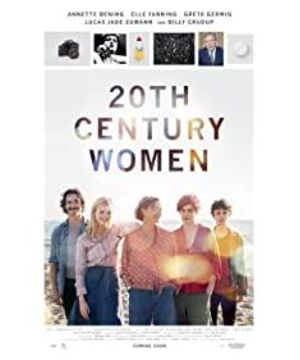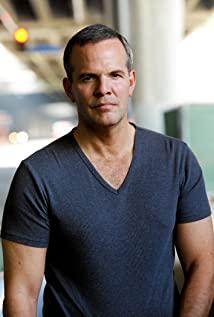Unfortunately, I can't always write very structured film reviews, and I can only say a few words each time, only to increase my laugh.
The segment in the film where everyone dances in the motel is quite inconsistent. Five conflicted people, a radical feminist suffering from cancer, an awakened single-parent girl, an old party member who doesn't know what love is, a single mother who only loves jazz, and a ignorant and rebellious child. Everyone has a clear imprint of that era, they are difficult to change, and some people may never be changed. Even if they live in the same room, get along day and night, and even blood is thicker than water, they can't change the rift in their concepts.
The ancients were slow in everything, and the renewal and iteration of ideas was also slow. Every revolution in productivity was bound to accelerate the leap forward in social concepts. It is no wonder that the Middle Ages lasted for a thousand years, and the Renaissance, the religious reform, and the rational movement intensified. In the 20th century, when war and peace were repeated, and electronic information technology developed rapidly, the renewal of social concepts was divided into ten years or even one year. Whether it is the impact of war on people, the swing of the left and the right (presidential speech), the experiment of communism, the emergence of feminism, and the advancement of sexual concepts, they have profoundly affected the thinking and behavior patterns of the five protagonists, and they also do not understand each other. Even the root cause of the conflict.
The director is also a screenwriter, and the lens language is particularly artistic. The colorful phantoms of car movement, zooming in and zooming out, switching old photos, and out-of-sync language in the pictures are all very similar to those seen in the experimental short films seen at the Museum of Modern Art. Some such as presidential speeches, TV commercials, colorful posters, punk sports and even skateboarding have a strong 70s and 80s imprint. The life trajectories of the five people basically cover the 20th century. Compared with the current technological development, it is still too slow to imagine how it should be presented in the filming of "Women of the 21st Century".
The fundamental contradiction of the film is the communication between mother and child, and a girl next door and two tenants are added. The story is full but not boring, the first half is a little slow, and there are personal perspectives to introduce each other, so I don't feel bored. After the story unfolds, the chronological dialogue also amused many middle-aged Americans, which is quite resonant.
The heroine's acting skills are quite strong. Take smoking as an example. The cigarettes used to calm down, relieve boredom, contemplate and worry are different. The anxiety, anger, grievance, unwillingness, and sadness of the child deeply moved people. This mother will also break through her own three views for her child, listen to punk, and try to accept the new generation of ideas. Even if she tries and fails, like a 100% mother, we still think she is great. The tragedy between her and her child is of the times, not of character.
Why do boys become feminists? Not only because of the progress of the times, or the influence of books, but also because the three women in his life are quite influential. The mother is an unmistakable independent woman who has been through war and divorce, the tenant is a self-improving feminist who studied art at NYU, and a first love who is constantly awakening to a promising future. It is because there are real and admirable women in his life that he can understand women and feminism better. He read to his mother "Our Body, We Call the Lord", not to ridicule or ridicule, but sincerely hope that his mother can also participate in the feminist movement, respect the body, respect the orgasm, and respect the life experience of women as individuals.
If there is any slot, it is probably that the director forcibly arranged the ending for everyone at the end, which makes people feel a little overwhelmed. Among the five people in the 1979 node, love and hatred are the most real. In the end, it is better to let the audience think about the ending for each person. Such a hasty take for granted only increases the laughing ears.
View more about 20th Century Women reviews











